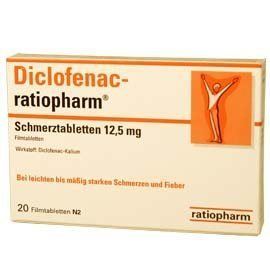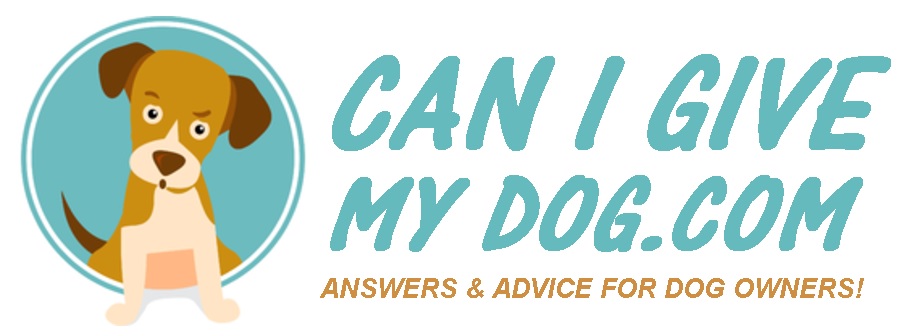Diclofenac works well to relieve swelling and pain caused by inflammatory diseases.
And that explains why owners often ask if this drug is safe enough for their dogs.
 Here’s the deal:
Here’s the deal:
Going it alone, with leftover Diclofenac, is a bad approach. It would be unsafe because this particular NSAID is linked to some serious side effects. Your dog could be harmed.
As a strong pain mediation, it is essential that a veterinary professional sign off on the treatment.
Dogs Can Take Diclofenac (vet prescription required)
Also known as Voltaren, giving this drug to your pet is not to be taken lightly!
Without sufficient knowledge, the situation could easily turn tragic. Death is even possible.
The Dangers For Dogs
Diclofenac can cause mild to severe side effects in dogs.
Concerns include:
- Nausea
- Vomiting
- Diarrhea
- Constipation
- Black or bloody stools
- Decreased appetite
- Drowsiness
And there are much more serious complications linked to this medication.
For example, there are dogs with liver damage as a result of taking Diclofenac.
Check The Clinical Data
A 2002 study found, “BUN and creatinine levels were significantly increased” when dogs were given a bit less than 1.5mg of Diclofenac (twice daily) per pound of their body weight.
This confirms our worst fears:
Kidney harm and stomach ulcers. Renal damage has been documented.
Effective Pain Reliever?
Despite the dangers, the NSAID works for its intended purpose and for pets too.
The Asian Journal of Animal and Veterinary Advances found Diclofenac to be, “an excellent analgesic for postoperative pain in healthy dogs.”
However, it should be pointed out that this study was carried out under super controlled conditions meaning risks were professionally minimized.
Diclofenac For K9 Eyes
As stated earlier, there are widely accepted uses for dogs and though they often relate to the eyes.
Diclofenac assists with ocular surgery recoveries and can treat anterior uveitis as well as iritis — 2 eye conditions common among canines.
Such scenarios may call for administering the medication as a formula called Voltaren Ophthalmic® (0.1% Diclofenac sodium liquid solution).
In any case, do not give your dog Diclofenac without proper guidance.
The Bottom Line
Only your veterinarian can decide if Diclofenac is right for your dog.
Routine use for animals applies to specific ophthalmic problems. Diclofenac for pain is an entirely different animal (pun intended)!
In all seriousness, do not take any chances!
Get a diagnosis. Only then can a safe and appropriate med be prescribed for whatever inflammatory issue your dog is facing.

Why has my dog’s tongue color changed to red with brown spots? What is the reason? Anyone know?
My dog had a back hernia during the night, and I could not take him to the vet immediately the next day. I didn’t know what to do and it agonized me to watch him in such condition. I sought answers on the internet and I saw an online vet’s advice on Youtube.
I thought to make him more comfortable, and at least let him rest, I would give him Diclofenac for pain. I broke the tablet into 1/4 and that is what I gave 3 times per day at 6 hour intervals. The dog is reacting severely after 24 days of no symptoms.
At first it seemed to help with the pain. Then he started vomiting regularly during the night. It seems he is vomiting up undigested food which I gave more than 24 hours ago. I thought it should have passed already.
I took him to the vet and he threw up there 3 time in the waiting room. The vet was not impressed with me giving him human medicine. It’s not intended for dogs and he remarked that my dog could already have developed an ulcer, among other dangerous side effects.
I may have caused harm to my dog. He is paralyzed in one leg already. Diclofenac just made my dog more sick in addition to the serious back injury. In other words, go directly to the vet. Don’t take advice from questionable sources.
My Schnauzer has been on 1 drop a day, in both eyes, once daily for four years with no side effects.
Perhaps so, but you are administering the drug topically. It may not reach the GI tract where (I think) these side effects occur. I am guessing that they occur when the drug is taken orally.
I agree Peter, she was giving a partial pill (not drops).
If you have a pet that’s in pain, or sick in some way, take him to a vet. Don’t gamble with their life.